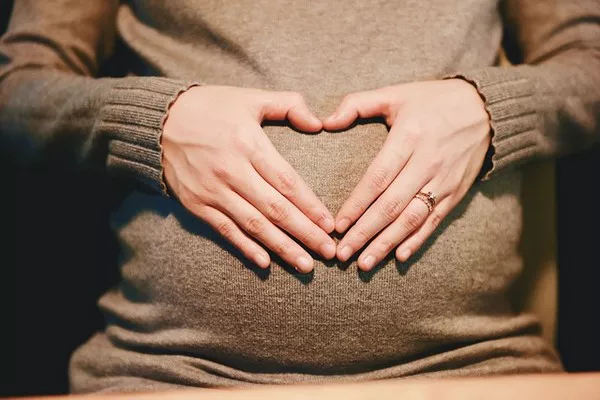Leg cramps during pregnancy are a common concern for many expectant mothers. These cramps can be sudden and painful, disrupting sleep and daily activities. Understanding the causes, treatment options, and preventive measures can help alleviate these discomforts. This comprehensive guide covers everything you need to know about leg cramps during pregnancy.
What Are Leg Cramps?
Leg cramps, also known as nocturnal leg cramps, are involuntary contractions of the muscles, usually in the calves, thighs, or feet. These contractions can be intense and painful, often occurring at night. While they are not usually serious, they can be quite distressing for pregnant women.
How Common Are They During Pregnancy?
Leg cramps are quite common during pregnancy, affecting up to 50% of pregnant women. They are particularly prevalent in the second and third trimesters, but they can occur at any stage of pregnancy.
Causes of Leg Cramps During Pregnancy
Changes in Blood Circulation
During pregnancy, the body undergoes significant changes in blood circulation. The growing uterus puts pressure on the veins in the pelvis and legs, which can affect blood flow. This pressure can lead to muscle cramps in the legs.
Increased Pressure on Leg Muscles
The additional weight gain associated with pregnancy increases the load on the leg muscles. This added stress can lead to cramps, especially if the muscles are fatigued from carrying extra weight.
Imbalance of Electrolytes
Electrolyte imbalances, particularly low levels of potassium, calcium, and magnesium, can contribute to muscle cramps. These minerals are essential for proper muscle function, and deficiencies can cause cramps.
Dehydration
Pregnant women are more prone to dehydration due to increased fluid needs and frequent urination. Dehydration can lead to muscle cramps, including those in the legs.
Changes in Hormone Levels
Pregnancy hormones, such as progesterone, can affect muscle function and contribute to cramps. Hormonal changes can also influence fluid balance and circulation, further exacerbating the problem.
Sedentary Lifestyle
A lack of physical activity can contribute to muscle cramps. Pregnant women who spend long periods sitting or lying down may experience more frequent cramps.
Treatment Options for Leg Cramps
Stretching Exercises
Regular stretching of the leg muscles can help alleviate and prevent cramps. Simple exercises like calf stretches can be effective. To perform a calf stretch:
Stand facing a wall with your hands pressed against it.
Place one foot behind you, keeping it flat on the floor.
Bend your front knee and lean forward slightly.
Hold the stretch for 15-30 seconds, then switch legs.
Massage and Heat Therapy
Massaging the affected muscle can provide immediate relief from cramps. Applying a warm compress or heating pad to the area can also help relax the muscle and reduce pain.
Hydration and Electrolyte Balance
Ensuring adequate hydration is crucial. Drinking plenty of fluids throughout the day can help prevent cramps. Additionally, consuming foods rich in potassium, calcium, and magnesium can support electrolyte balance. Foods such as bananas, dairy products, and leafy greens are excellent choices.
Proper Footwear
Wearing supportive footwear can reduce the risk of leg cramps. Shoes with good arch support and cushioning can help alleviate some of the pressure on the legs.
Safe Medications
In some cases, over-the-counter pain relievers like acetaminophen may be recommended for pain relief. However, always consult with a healthcare provider before taking any medication during pregnancy.
Prevention Strategies
Regular Exercise
Engaging in regular, moderate exercise can help prevent leg cramps. Activities such as walking, swimming, and prenatal yoga can improve circulation and reduce muscle fatigue. Always consult your healthcare provider before starting any new exercise regimen.
Proper Sleep Positioning
Sleeping on your side, especially the left side, can improve blood circulation and reduce pressure on the leg veins. Using pillows to support your legs and feet can also help maintain a comfortable position.
Avoid Prolonged Sitting or Standing
Try to avoid sitting or standing in one position for extended periods. If you must sit for long periods, take breaks to stretch and move around. Using a footrest can also help reduce pressure on your legs.
Balanced Diet
Maintaining a balanced diet that includes adequate levels of essential vitamins and minerals can help prevent cramps. Incorporate a variety of nutrient-rich foods into your meals to support overall health and muscle function.
Compression Stockings
Wearing compression stockings can help improve blood circulation in the legs. These stockings apply gentle pressure, which can reduce swelling and prevent cramps.
When to Seek Medical Attention
Persistent or Severe Pain
If leg cramps are persistent or severe, it is essential to consult a healthcare provider. Persistent pain may indicate an underlying condition that requires medical attention.
Associated Symptoms
If leg cramps are accompanied by swelling, redness, or warmth, seek medical advice. These symptoms could indicate a more serious condition, such as a blood clot.
Other Concerns
If you experience leg cramps along with other unusual symptoms or changes in your health, consult your healthcare provider for a thorough evaluation.
Lifestyle Adjustments for Overall Comfort
Maintain a Healthy Weight
Maintaining a healthy weight can help reduce the strain on your legs and prevent cramps. A balanced diet and regular exercise can support weight management.
Stay Active
Regular physical activity can improve circulation and reduce the likelihood of cramps. Choose activities that are safe and comfortable for your stage of pregnancy.
Practice Relaxation Techniques
Stress and anxiety can contribute to muscle tension and cramps. Practice relaxation techniques, such as deep breathing exercises or meditation, to help manage stress levels.
See Also: Period Cramps vs. Pregnant Cramps: What is the Difference?
Conclusion
Leg cramps during pregnancy can be a frustrating and painful experience, but understanding their causes and treatment options can help manage and prevent them. By incorporating stretching exercises, maintaining proper hydration, and making lifestyle adjustments, pregnant women can reduce the frequency and intensity of leg cramps. Always consult with a healthcare provider for personalized advice and treatment options to ensure a healthy and comfortable pregnancy.

